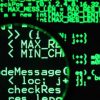In a way, the ORIC-1 was so mesmerizing because it stripped computing down to its most basic form: you typed some instructions; it did something cool. This was the computer’s essential magic laid bare. Somehow ten or twenty lines of code became shapes and sounds; somehow the machine breathed life into a block of text. No wonder Colin got hooked. The ORIC-1 wasn’t really a toy, but a toy maker. All it asked for was a special kind of blueprint.
Once he learned the language, it wasn’t long before he was writing his own simple computer games, and, soon after, teaching himself trigonometry, calculus and Newtonian mechanics to make them better. He learned how to model gravity, friction and viscosity. He learned how to make intelligent enemies. (via How I Failed, Failed, and Finally Succeeded at Learning How to Code – Technology – The Atlantic)
